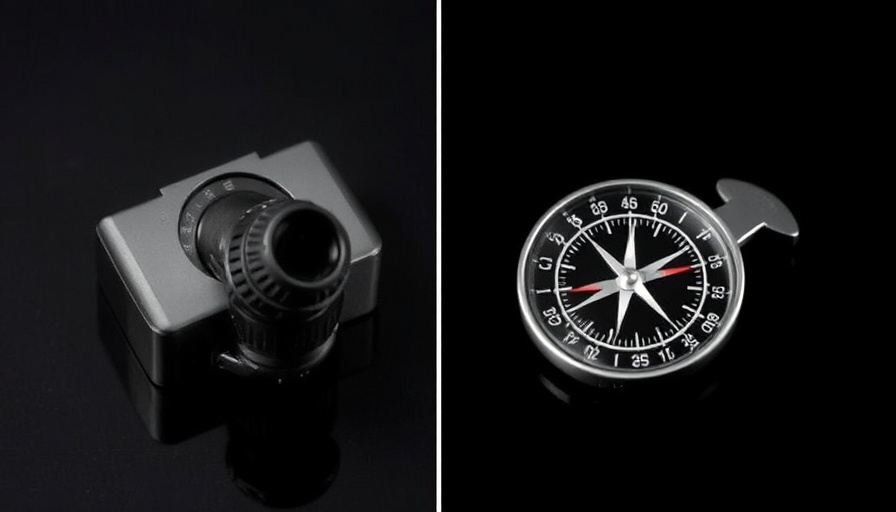
The CIA Museum: A Hidden Jewel
Nestled just northwest of Washington, D.C., the CIA Museum has long boasted a reputation as the "greatest museum you’ll never see." Opened in 1988, this clandestine treasure trove has remained largely inaccessible, only welcoming agency employees and select guests. However, the winds of change are blowing as the CIA strives to open its vaults of history to the public, especially in light of its recent anniversary and the unveiling of a new website.
Unique Artifacts that Tell a Story
Among the most intriguing items on display is a rather unusual artifact: a spy pigeon equipped with a miniature camera. Originating from a time when aerial photography was challenging, these pigeons were intended to collect crucial images without attracting attention. "The pictures were great, but these pigeons have minds of their own," explains museum director Robert Byer. Unfortunately, the program never took flight, leaving the pigeons as unique, albeit ineffective, pieces of history.
Other highlights of the museum's collection include cyanide-laden fountain pens and bricks retrieved from Osama bin Laden's hideout. This diverse assortment not only exposes the innovative tools of espionage but also the complex narratives woven into America's history of intelligence. It serves as a reminder of the lengths taken to protect national security, a topic that resonates deeply even today.
World War II and the Birth of Modern Espionage
While the CIA was officially established in 1947, the artifacts tell an even older story, tracing back to the Office of Strategic Services (OSS) during World War II. Under the leadership of the enigmatic William "Wild Bill" Donovan, the OSS developed creative, often unconventional methods to combat the Axis forces. The urgency was clear: "I need every subtle device and every underhanded trick to use against the Germans and the Japanese," Donovan once commanded.
Thus, the OSS produced an array of covert tools, like cufflinks and buttons cleverly designed to conceal compasses. Such inventive gadgetry not only facilitated clandestine missions but also marked a turning point in how intelligence operations were carried out.
The Evolution of the Museum: From Secrecy to Transparency
The museum's transformation reflects a broader cultural shift within the CIA, driven by a desire to enlighten the public while still protecting sensitive information. "Sharing what we can but protecting what we must," says Mackenzie from the Office of Public Affairs. Their effort to curate compelling exhibits and stories ensures that the CIA's legacy continues to evolve alongside the modern world.
It comes as no surprise that the museum's most recent addition—a series titled "The Debrief"—aims to unravel the layers of history linked to its artifacts through engaging videos. By providing insight into both declassified mission stories and the technology of espionage, the CIA is taking steps toward demystifying its purpose.
The Significance of CIA Artifacts in Today’s Context
In a world inundated with data and information, understanding the significance of historical intelligence efforts remains crucial. These artifacts, from spy pigeons to cufflink compasses, reveal not just pieces of technology but the very essence of ingenuity that defines American intelligence. As technology evolves, the complexity of gathering critical information grows, making the lessons gleaned from these historical items all the more relevant.
Moreover, as San Diego's residents embrace their rich history and cultural heritage, these stories resonate deeply with themes of resilience and adaptation, echoing the innovative spirit that is characteristic of the region.
Explore and Engage with the CIA's History
As the CIA Museum continues to develop and release content that is accessible to the public, now is an excellent time to dive into the captivating world of espionage. The unique artifacts serve as a window into America’s past, illuminating the complex tapestry of national security and intelligence. For those in San Diego, engaging with these historical narratives could offer valuable perspectives, fostering a profound appreciation for the sacrifices made in the name of security.
The unveiling of this newfound transparency represents an opportunity for citizens to connect with their national history. Understanding the implications of past espionage efforts contributes to informed dialogues about current security challenges, motivating residents to contemplate their role in a constantly changing world.
While you contemplate how these stories contribute to our understanding of modern security challenges, it’s equally essential to think about how these narratives can inspire you. Delve into the exploration of these artifacts online and reflect on the unique insights they provide into human resilience and creativity in the face of adversity.
 Add Row
Add Row  Add
Add 




 Add Row
Add Row  Add
Add 

Write A Comment